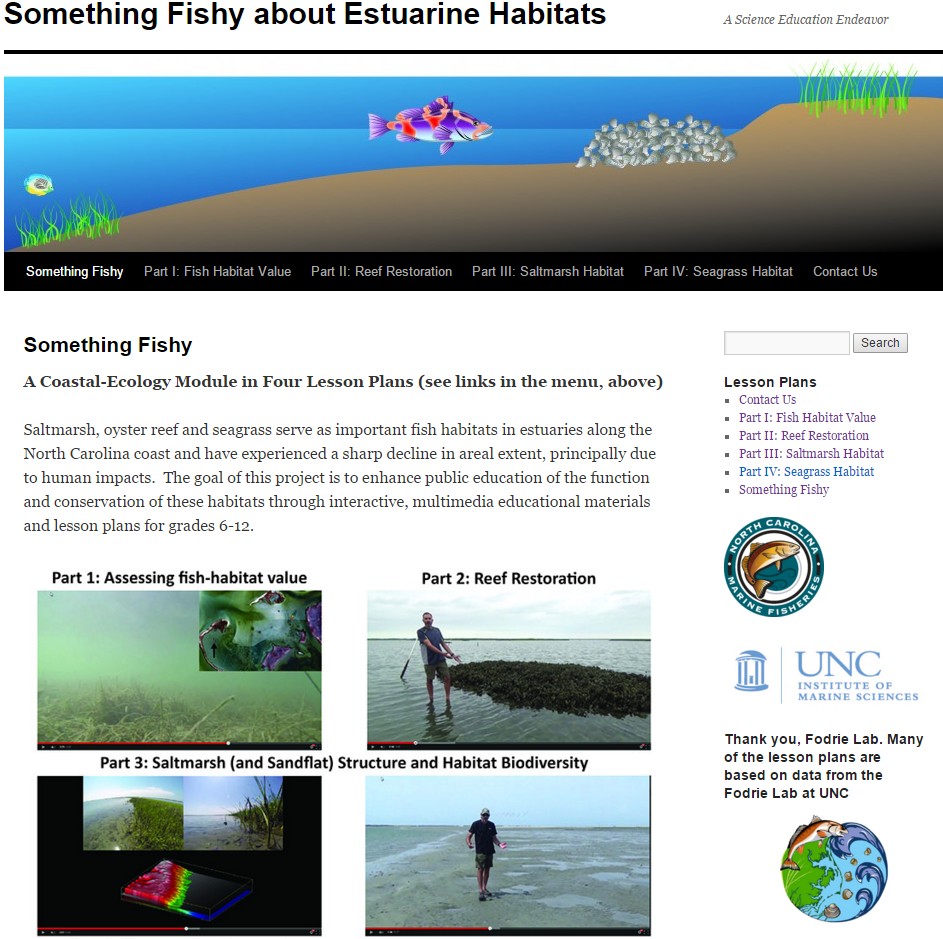Contact Information
Important:
Commitments to diversity and inclusivity are fundamental to the Rodriguez Lab and UNC-EMES’s mission.

Not really what Core Banks looks like, but a fun sticker.
Lab Musings (mostly)
- RT @annesmileyy: The 2022 @UNC_EMES grad student retreat was amazing! Loved spending time outdoors with fellow students and learning about… 08:27:27 PM October 12, 2022 from Twitter for iPhone ReplyRetweetFavorite
- RT @susanalesecohen: Have you met @ENEC_UNC graduate student @AndrewZachman? He studies the impact of forest stand structure and fire freq… 08:12:33 PM September 13, 2022 from Twitter for iPhone ReplyRetweetFavorite
- RT @UNCims: Did you catch the first field site blog post? Check it out! Stay tuned for a new post later this week. 06:00:09 PM September 11, 2022 from Twitter for iPhone ReplyRetweetFavorite
Lesson plans for middle- and high-school teachers that focus on estuarine fish habitats can be found here.
-
Recent Posts
- Explaining the wide range of salt marsh carbon accumulation rates August 12, 2022
- Working with John Anderson for 30 years June 18, 2022
- Elevations where oyster reefs grow best increase as they age June 3, 2021
Archives
Meta
Author Archives: Antonio Rodriguez
Explaining the wide range of salt marsh carbon accumulation rates
It is difficult to value salt marsh as a blue carbon habitat given the wide range of carbon accumulation rates reported in the literature. From collecting 51 sediment cores from seven salt marshes in North Carolina we found that the … Continue reading
Posted in Uncategorized
Leave a comment
Working with John Anderson for 30 years
Holocene Evolution of the Western Louisiana–Texas Coast, USA: Response to Sea-Level Rise and Climate Change When I first met John Anderson in 1994, I was a senior at Hamilton College traveling to Antarctica to participate in an NSF research project. … Continue reading
Posted in Uncategorized
Leave a comment
Elevations where oyster reefs grow best increase as they age
Intertidal oyster reefs are thought to grow best when they are out of the water 20-40% of the time, but as reefs age, they tend to grow most rapidly when they are exposed about 50-60% of the time. Molly Bost … Continue reading
Posted in Uncategorized
Leave a comment
Deposition of a washover fan can take some time
I used to think that washover fans were all event deposits. A major storm, such as a hurricane, impacts a barrier island, causes overwash, transports sand across the island, and deposits a washover fan. After the storm passes, vegetation colonizes … Continue reading
Posted in Uncategorized
Leave a comment
MHC Field Site 2020
Welcome Morehead City Field Site students. We just finished the first week and so far so good. Sunday Aug. 9 was move in day to NC State’s Coastal Quarters and we kicked the semester off with take out from Dank … Continue reading
Posted in Uncategorized
Leave a comment
The Ups and Downs of Publishing
It’s common for a manuscript to need revisions before it can be accepted for publication in a journal, but every once in a while, I have trouble getting a paper accepted. It floats from one journal to the next and … Continue reading
Posted in Uncategorized
Leave a comment
New Normal?
Since the middle of March, this is what my new normal looked like. Working out of the back-yard shed and meeting over zoom. We had remote lab meetings every day and finished some papers, reviews, and reports taking advantage of … Continue reading
Posted in Uncategorized
Leave a comment
Hurricane Dorian
Last week Hurricane Dorian impacted North Carolina. In collaboration with the MARS Lab at Duke University, including Justin Ridge, we examined how the storm affected the morphology of Bird Shoal. Before the storm came by, we deployed a camera trap … Continue reading
Posted in Uncategorized
Leave a comment
The first oyster
I’ve been working with Molly Bost to compare oyster reef growth and composition among tidal and landscape settings. Our data set is composed of 12 natural reefs and this week we sampled the first oyster to colonize each reef to … Continue reading
Posted in Uncategorized
Leave a comment
IE 2018 Field Trip to Cheeseman Inlet
This post is to help the IE 2018 class prepare for their first exam. It’s been a tough semester filled with large storms, evacuations, and modifications. I thought this information would be helpful because when classes are on a field … Continue reading
Posted in Uncategorized
Leave a comment


